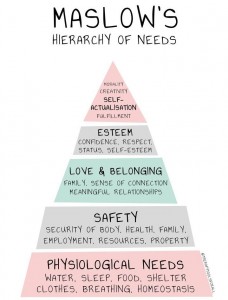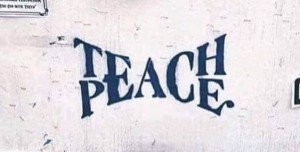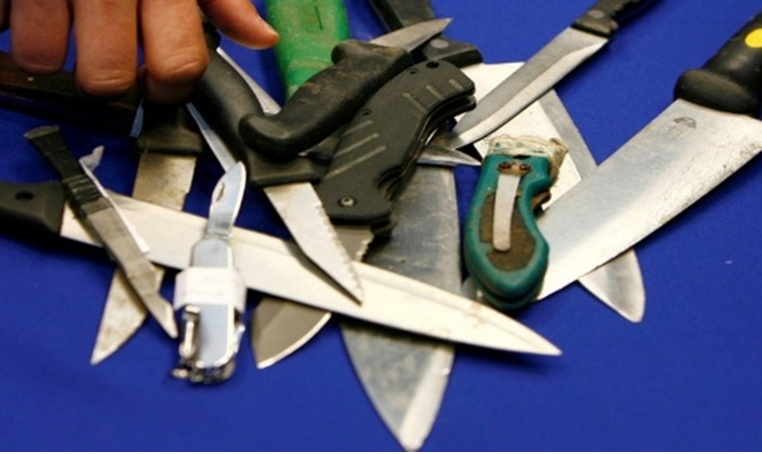Knife crime is one of the most pressing youth issues in the UK today. But while headlines often focus on weapons, and solutions focus on reducing the availability of weapons (or even on rewarding youth for surrendering their weapons!) the real focus should be: why do young people feel the need to carry a knife and, perhaps more importantly, what makes them capable of using it? The solutions, therefore, should be centred on those questions, addressing the deeper needs for empathy and accountability, belonging and connection, not on punishments or quick-fix surrender schemes. Research consistently shows that knife carrying among young people is rarely just about aggression – it is often about fear, identity and belonging. The Edinburgh Study of Youth Transitions and Crime [1] found that 30% of young people, aged 12-17, had carried a knife at some point, often citing protection and status as reasons. For some, that sense of protection comes through gang affiliation, which offers the connection and identity they may struggle to find elsewhere.
According to Maslow’s Hierarchy of Needs[2], we all have the need to belong. This is particularly salient for young people. When this basic human need isn’t met in positive environments, like home or school, young people will seek it elsewhere – often finding it in gangs.
 Studies have shown that young people often join gangs not primarily to offend, but to belong. Gangs offer identity, protection, and a sense of family that may be missing in other parts of their lives. A 2019 University of Birmingham study[3] described gang membership as “a site of belonging” that gives young people feelings of respect, worth, and pride.
Studies have shown that young people often join gangs not primarily to offend, but to belong. Gangs offer identity, protection, and a sense of family that may be missing in other parts of their lives. A 2019 University of Birmingham study[3] described gang membership as “a site of belonging” that gives young people feelings of respect, worth, and pride.
Restorative Approaches provide a healthier, safer alternative. By building inclusive school cultures where every voice matters and everyone feels valued, RA creates a sense of belonging that prevents the pull towards gang membership and, ultimately, violence. According to The All Party Parliamentary Group for Knife Crime [4], “Schools have a vital role to play in the effort to prevent and tackle serious youth violence.”
Furthermore, restorative practices give young people a chance to truly understand the impact of their actions on others – those directly involved, as well as the wider community. Instead of punishment that alienates, they experience connection through conversations that highlight real human consequences. When a young person hears directly from the person they’ve harmed how their actions have made them feel, empathy is awakened. This deeper understanding can shift attitudes in a way that sanctions never will.
Knife crime isn’t solved by confiscating blades or making them more difficult to come by (after all, where there’s a will, there’s a way!). It’s solved by reducing the will and addressing trauma, disconnection, and lack of emotional regulation. Restorative Approaches do just that: they help young people build empathy, foster accountability, understand and regulate their emotions, and anchor themselves in a community that values them.
Punitive Responses Vs Restorative Connection
Punitive responses to knife crime often focus on exclusion or legal penalties. While they may address immediate safety, they can intensify feelings of isolation, resentment, and disconnection and thus strengthen the very gang affiliations that contribute to violence. In fact, evidence shows that exclusion and isolation can strengthen a young person’s identification with gangs, pushing them towards groups that promise protection and belonging, especially when they already feel rejected by authority or school. Research in BMC Public Health (2020)[5] found that strong parental attachment, school engagement and supportive relationships act as protective factors against weapon-carrying. In contrast, disconnection and exclusion increase the risk and can drive young people towards groups that fill that emotional void.
RA approaches the problem differently: harm is acknowledged, relationships are repaired where possible, and accountability is built through understanding rather than fear.
A Case in Point
For instance, consider a scenario where a young person has threatened another student with a knife. In a purely punitive system, the focus would be on exclusion or legal consequences, which might increase alienation and resentment. In a restorative process, the young person (the ‘harmer’) would sit in a safe, facilitated meeting with the person they harmed (‘harmee’). They would hear firsthand about the fear and trauma caused, and they would have the opportunity to explain their own feelings, fears or pressures that led to the behaviour. Together, the group would explore what could be done to repair trust and ensure safety, as well as how they might do things differently next time. Such a conversation does not excuse the behaviour, but it transforms the experience into accountability, empathy building, and an opportunity for change.
Prevention Rather than Cure
Prevention is always the best option and, rather than simply addressing the situation once a knife has been used (or threatened), RA goes to work before it reaches that point; it seeks to prevent young people from picking up knives in the first place. Children are, by nature, egocentric and therefore rarely think about the impact of their actions on others. Traditional punitive approaches to discipline intensify this by focusing all the att ention on the harmer. Restorative conversations, however, bring the harmee into the mix and gives them an opportunity to be heard. By always defaulting to a restorative conversation, instead of more punitive responses, children and young people learn to understand the impact of their actions on others; they become less egocentric and more empathetic and, consequently, less likely to act impulsively, or, indeed, have it within them to pick up a knife as a weapon. Furthermore, giving the harmee the opportunity to be heard helps them feel valued too and helps them to gain an understanding as to why the behaviour happened in the first place, as well as receive reassurance that it won’t happen again. All the things that don’t happen in traditional punitive systems.
ention on the harmer. Restorative conversations, however, bring the harmee into the mix and gives them an opportunity to be heard. By always defaulting to a restorative conversation, instead of more punitive responses, children and young people learn to understand the impact of their actions on others; they become less egocentric and more empathetic and, consequently, less likely to act impulsively, or, indeed, have it within them to pick up a knife as a weapon. Furthermore, giving the harmee the opportunity to be heard helps them feel valued too and helps them to gain an understanding as to why the behaviour happened in the first place, as well as receive reassurance that it won’t happen again. All the things that don’t happen in traditional punitive systems.
Discussing their feelings (at the time and now) helps young people to connect their feelings with their behaviour and allows them to understand how their feelings impact their behaviour, thus increasing their emotional literacy and ability to regulate their emotions. Again, this reduces the likelihood of them acting impulsively but also adds another protective factor which, in turn, increases their resilience[6].
The Science of Connection
The efficacy of the restorative approach is backed by neuroscience. The human brain is wired for connection. When children experience safe, empathetic relationships, their brains develop the pathways needed for emotional regulation and social understanding [7]. In contrast, punitive environments often create stress and fear – states that shut down the very parts of the brain needed for reflection and growth.
Neuroscience also aligns with social research: belonging isn’t just an emotional luxury – it’s a biological necessity. When young people feel safely connected, their brains release oxytocin and activate regions linked to empathy and regulation. When they feel excluded or threatened, stress responses dominate, reinforcing defensive or impulsive behaviours such as knife-carrying or aggression. Restorative conversations rebuild those neural pathways of safety and trust; literally rewiring the brain for empathy and connection.
In an era where digital communication is overtaking face-to-face interaction, helping children develop their “social brain” has never been more important. Restorative conversations, with their focus on open, respectful dialogue, offer a simple yet powerful way to do this.

Building Belonging as Prevention
Building belonging is, therefore, not a soft alternative to enforcement; it’s a proven form of prevention. While knife crime and gang involvement are often linked, national data shows that only around 5% of knife crime with injury in London was gang-related[8], highlighting that the underlying issue is broader: disconnection. By focusing on connection, through restorative practice, strong school relationships, and community inclusion, we address the root cause, not just the symptom.
What’s Next?
Community leaders, educators, and policymakers must look beyond punitive approaches. By investing in restorative practices, we not only reduce violence and gang membership, increase empathy and responsibility but also give young people the sense of belonging and resilience they need.
Behaviour Matters has been helping schools implement Restorative Approaches, including training children as Peer Mediators, for over 12 years. If you’d like to learn more about how it might benefit your school, youth club or youth centre, I’d love to chat. Please give me a call on 07432033569 or drop me an email at leanneguillen@behaviourmatters.org.uk
REFERENCES:
[1] McVie, S. (2010). Gang membership and knife carrying: Findings from the Edinburgh Study of Youth Transitions and Crime. Scottish Centre for Crime and Justice Research
[2] Maslow, A. H. (1943). A theory of human motivation. Psychological Review, 50(4), 370–396.
[3] Hallsworth, S. & Young, T. (2019). Gang Talk and Gang Research: A Critique. Crime, Media, Culture, 15(1), 151–168
[4] All-Party Parliamentary Group (APPG) on Knife Crime. (2019). Back to School? Breaking the link between school exclusions and knife crime. The Ben Kinsella Trust.
[5] Ward, J., Tinkler, S., & Simkiss, D. (2020). Protective and risk factors for youth violence and weapon carrying among adolescents: A systematic review. BMC Public Health, 20(1), 145
[6] Daniel, S.K., Abdel-Baki, R. & Hall, G.B. The Protective Effect of Emotion Regulation on Child and Adolescent Wellbeing. J Child Fam Stud 29, 2010–2027 (2020).
[7] Cozolino, L. (2014). The Neuroscience of Human Relationships: Attachment and the Developing Social Brain. W. W. Norton & Co. and Decety, J., & Cowell, J. M. (2015). Empathy, Justice, and Moral Behavior. AJOB Neuroscience, 6(3), 3–14 and Carter, C. S. (2014). Oxytocin pathways and the evolution of human behavior. Annual Review of Psychology, 65, 17–39.
[8] Mayor’s Office for Policing and Crime (MOPAC). (2020). Knife Crime Strategy: Data Summary
Durlak, J. A., et al. (2011). The Impact of Enhancing Students’ Social and Emotional Learning: A Meta-Analysis of School-Based Universal Interventions. Child Development, 82(1), 405–432



